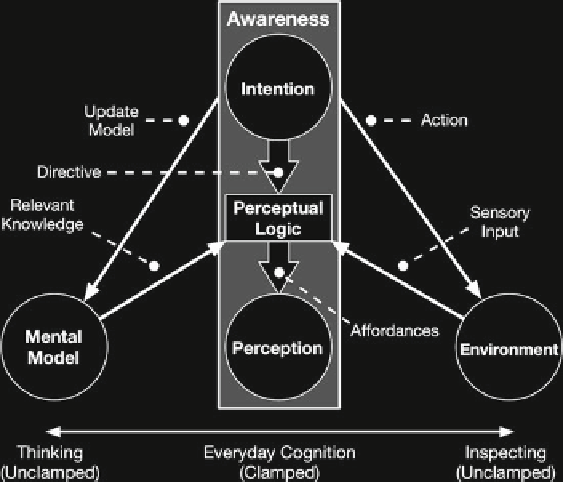Information Technology Reference
In-Depth Information
we certainly construct plans to try to organize our interactions with the environ-
ment, they are never constitutive of the actual creative process, which is enacted in
concert with feedback from the environment. We cannot cut off this real-time inter-
action feedback loop with the environment in any way if we hope to create a realis-
tic model of creativity and cognition.
7.3.6.1
Model Description
We fi rst explain the visual conventions of the enactive model of creativity and
describe how it can be applied to model creative cognition through time. Then, we
describe in detail a new concept derived from our model called perceptual logic,
which is a perceptual fi lter that highlights relevant affordances in the environment
while suppressing irrelevant affordances. Next, we explain how modulating percep-
tual logic leads to different ways of seeing and interacting with the world in a way
that can account for the diverse array of human creative behavior.
In the enactive model of creativity (see Fig.
7.5
), the awareness of the agent is
represented by the vertical rectangle situated on a spectrum of cognition, which
essentially means that the agent is “aware” of what is perceived and its current
intention. Perception is constituted partly by the mental model the agent has con-
structed for the current situation (top-down cognition) as well as the sensory input
coming from the environment (bottom-up cognition) (Gibson
1979
; Glenberg
1997
;
Varela et al.
1991
; Stewart et al.
2010
; Gabora
2010
).

